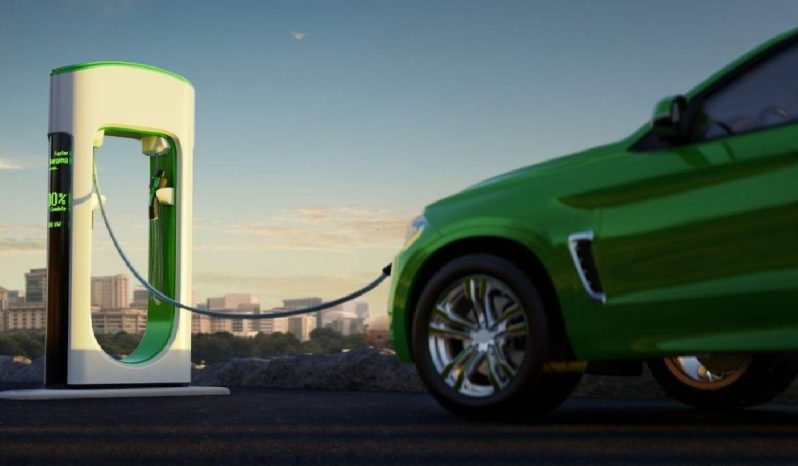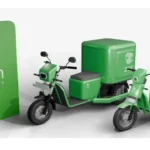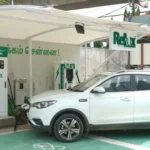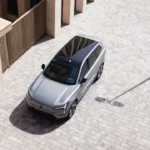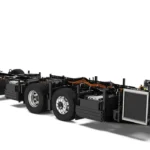India is on the cusp of becoming the world’s largest electric vehicle market. The country is working towards creating the most robust electric vehicle ecosystem in the world, and it seems like it’s only a matter of time before it becomes a reality. The year 2023 was a turning point for India’s electric vehicle industry, with over 1.5 million units sold, marking a significant increase of 50% from the previous year. With the overall share of EVs in India’s auto sales rising sharply to 6.38% in 2023, it’s clear that electric vehicles are gaining traction among the Indian automobile-purchasing class.
Two-wheelers are driving the electric vehicle surge in India, with a significant increase of 34.42% in the third quarter of FY24 compared to the second quarter. On a year-on-year basis, there was an 11.16% growth in the third quarter of FY24 compared to the same period in FY23.
Prime Minister Narendra Modi recently turned his attention to the electric vehicle segment and called for business leaders and executives to think innovatively and work collaboratively. He spoke of the emergence of a new middle class in India that has just risen out of poverty and is now looking to purchase vehicles to fulfill their mobility requirements. With the Indian government’s push towards electric vehicles, it’s not hard to imagine a future where most of the vehicles running across the globe are made in India. The target of adding over two million electric vehicles to the domestic market this year looks easily achievable, and it’s exciting to think about the possibilities that lie ahead for India’s electric vehicle industry.
India’s EV Journey
It is an exciting time for India’s automobile industry as it is expected to witness a massive transformation in the coming years. Experts predict that India will become the world’s largest electric vehicle market by 2030, surpassing even China and the United States. The growth of electric vehicles is expected to be phenomenal, with a compound annual growth rate of 49 per cent, leading to annual sales of close to 10 million units by 2030.
In anticipation of this shift towards electric mobility, the Indian government is taking several measures to achieve its target of ensuring 30 per cent EV penetration in the country by 2030. The Modi government’s support through the FAME scheme is boosting the uptake of electric vehicles, with manufacturers selling discounted EVs and seeking the subsidised amount from the Centre. Additionally, an incentive program for advanced battery manufacturing is poised to drive down battery costs, further fueling the shift towards electric mobility.
The EV revolution in India will require new storage, distribution, and logistics facilities, and the government and the EV industry both anticipate a surge in demand for warehouses that can efficiently handle the manufacturing, storage, and distribution of EV parts and products. Efforts will be made to have a robust storage and warehousing infrastructure in place to aid India’s growing EV demand.
With the government’s dedicated investment of Rs 94,000 crore ($12.6 billion) over the next five years, we can expect to see rapid growth in the electric vehicle ecosystem. It is an exciting time for the Indian automobile industry, and we can anticipate a future where electric mobility is the norm.
India’s Experiment: Fusing Solar Power Into Electric Vehicles
As we look into the future, India’s push towards electric vehicles is gaining momentum. The government has recognised the importance of supporting the manufacturing of electric vehicles and has laid a special focus on building a robust charging infrastructure. In the coming years, we can expect to see a significant increase in the adoption of electric vehicles as the government works towards creating a uniform and pan-national EV charging infrastructure.
The recently launched PM Suryoday Yojana is a step in the right direction towards achieving this goal. The Centre’s plan to provide rooftop solar installations in the houses of middle and poor-class people in the country is expected to benefit close to 10 million households who would get up to 300 units of free electricity every month. This will encourage households to switch to electric vehicles and reduce their carbon footprint.
The government is also working to create sufficient public charging stations across India and has sanctioned Rs 800 crore to Indian Oil, Bharat Petroleum and Hindustan Petroleum to set up 7,432 public fast charging stations across the country under the FAME II scheme. This will make it easier for people to charge their electric vehicles when they are on the go.
With the government’s push towards rooftop solar installations and public charging stations, the middle and poor classes of Indians could very well emerge as the biggest propellants of an electric vehicle surge. In the future, we can expect to see more and more people using rooftop solar power to charge their vehicles. The Modi government intends to make this a national phenomenon that can catapult India to emerge as one of the most EV-friendly nations of the world.
The government’s initiatives are not limited to personal vehicles alone. In the coming years, we can also expect to see a greater adoption of electric buses for public transport networks through a payment security mechanism. The PM e-Bus Sewa programme is expected to deploy 10,000 e-buses across 169 cities, covering cities with a population of more than three lakh while prioritising those that do not have organised bus services. This will not only reduce the carbon footprint of public transport but also make it more affordable for the masses.
Startups Driving Electric Vehicle Revolution in India
The Indian EV industry is poised for some exciting developments in the near future. Startups are at the forefront of this revolution, driving innovation and sustainable solutions for mobility. With friendly government policies and a growing appetite for innovation, Indian startups are leading the charge in making India a world leader in the EV space. As we speak, about 60 startups are working tirelessly to make this a reality.
These startups are not only creating new jobs and popularising electric vehicles, they are also helping to reduce carbon emissions and offer a cheaper alternative to fossil fuels. In fact, electric three-wheeler rickshaws have already emerged as the lifeline of short-distance travel in Delhi and other urban centres, thanks to the efforts of these startups.
Prominent Indian startups such as Ather Energy, Altigreen, BluSmart, 3EV Industries, AMO Mobility, Exponent Energy and many others are playing a significant role in the country’s journey towards greater EV penetration. Another startup, Exicom Tele-System, is planning to get publicly listed soon. An Initial Public Offering (IPO) could come as soon as towards the end of February, with the company aiming to raise approximately Rs 430 crore through its public offer, out of which Rs 330 crore would be through the fresh issuance of shares. These funds will be used to set up a manufacturing facility in Telangana, repay borrowings, invest in its state-of-the-art R&D facility, and meet working capital requirements.
While the Indian EV dream is certainly taking off, there are still some challenges that need to be addressed, such as the high upfront cost of electric vehicles, lack of standardisation in terms of charging facilities, a general shortfall of charging stations, and the lack of a robust battery-making ecosystem. However, with concerted efforts from all stakeholders, these challenges can be overcome.
India is at a critical juncture in its journey towards becoming a dominant force in the electric vehicle realm. Despite the challenges, the promise of a cleaner, greener future for India’s transportation sector shines brightly on the horizon. We can’t wait to see what the future holds for the Indian EV industry!

